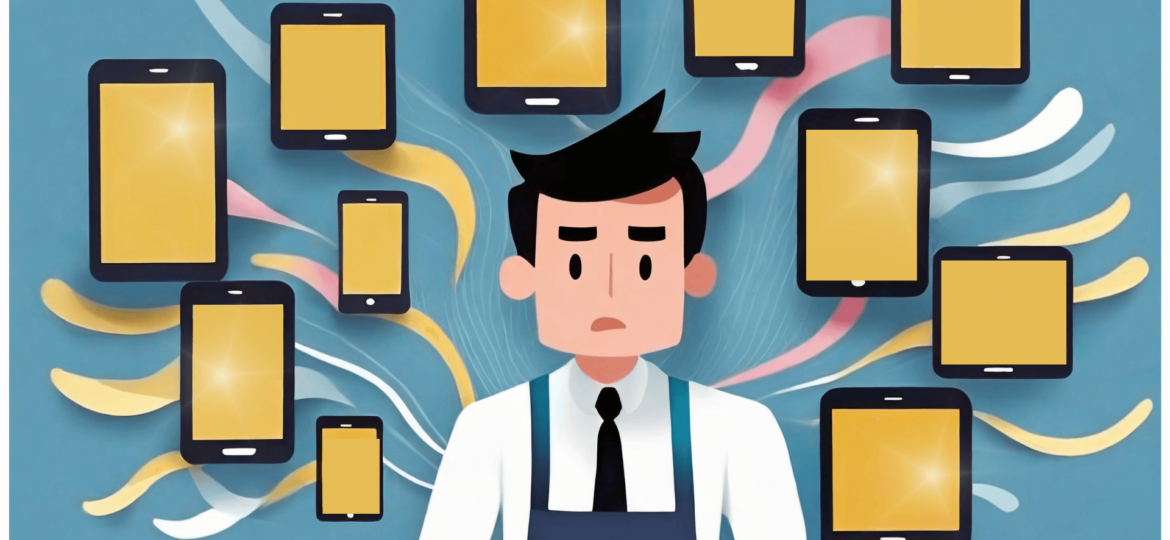
From Screens to Solutions: Navigating Operational Challenges Amidst the Tablet Hell Phenomenon
Picture this: you’re standing in a bustling fast-casual restaurant during the lunch rush. Behind the counter, a towering mountain of screens looms large, each representing a different third-party food delivery provider. Suddenly, the lunch peak begins, and orders flood in from every direction, each order emanating from a distinct screen. The chaos unfolds rapidly, overwhelming the staff who find themselves caught in the crossfire of a digital storm.
As the orders pour in from various screens, the once orderly process becomes a frantic juggling act. The challenge is not just managing the surge of deliveries but also attending to customers in the physical store. Amidst the flurry, errors begin to emerge. Orders are printed haphazardly, and the manual transfer of information into the Point of Sale (POS) system becomes a delicate task. For many restaurant owners, this scenario is all too familiar, a relentless struggle that has led some to consider avoiding third-party delivery services altogether. But what is this phenomenon and how did it emerge?
What we painted earlier is commonly recognized as “tablet hell” — a term that goes beyond mere catchiness, encapsulating the operational nightmare experienced by fast-casual restaurants caught in the crossfire of multiple third-party delivery services. The genesis of this term is rooted in the organic evolution of the market for delivery services. Restaurants, enticed by the promises of expanded reach and increased sales, eagerly embraced the power of delivery platforms such as Uber Eats, Glovo, and Just Eat.
However, this embrace came with unintended consequences. With each delivery platform introducing its own tablet, app, and login system, what initially seemed like a promising landscape rapidly transformed into a logistical nightmare. The proliferation of disparate systems, coupled with the common practice for restaurants to be on multiple platforms at once, created a tangled web that businesses found increasingly difficult to navigate, giving birth to the term “tablet hell”.
As we dissect the layers of this dilemma, we’ll uncover the specific challenges that constitute ‘tablet hell’ and explore innovative solutions that promise liberation from this chaotic state. This term persists as a vivid representation of the operational nightmare faced by fast-casual restaurants amid the relentless growth of the food delivery industry. In 2024, the industry is set to reach a staggering $108 billion, marking an $8 billion increase from the previous year in 2023 when its value was $100 billion. It is evident that the demand for food delivery services has been soaring and will continue to ascend.
- Operational Challenges: Fulfilling orders efficiently becomes a significant hurdle during peak hours, risking delays and potential customer dissatisfaction.
- Overwhelmed Staff: The staff becomes entangled in the digital storm of orders. The constant influx from disparate tablets creates a sense of urgency and pressure, diverting attention away from the diners in the restaurant. The overwhelming nature of “tablet hell” forces staff to prioritize digital demands over the needs of customers at the counter or tables.
- Training and Maintenance: Training staff to handle multiple tablet systems and maintaining several devices and apps demand additional time and resources.
Communication Issues: Coordinating with various delivery platforms, a common challenge for restaurants on multiple platforms simultaneously, leads to significant hurdles in communication between restaurant staff and the external services. This is especially concerning, as a striking 76% of customers place the blame on the restaurant for third-party delivery errors, resulting in poor ratings and negative reviews.
Error Proneness: Amidst the flurry of screens, the potential for errors amplifies. Staff members, burdened by the demands of numerous tablets, may inadvertently overlook customer requests, leading to inaccuracies in order processing. The risk of printing orders haphazardly and manual data transfer errors into the Point of Sale (POS) system further compounds the challenges.
- Technology Integration: The need to manage different tablets with distinct software requirements complicates the seamless integration of third-party delivery systems into the restaurant’s existing operations.
- Integration Issues: Some businesses face challenges integrating these platforms with their POS (Point of Sale) systems, leading to discrepancies in inventory and order management.
In the labyrinthine landscape of “tablet hell,” where managing multiple third-party delivery services creates a cascade of operational challenges for fast-casual restaurants, Zuplyit emerges as a comforting ally. As we’ve explored the challenges of this digital dilemma—ranging from overwhelmed staff and technology integration woes to communication issues and training fatigue—it becomes evident that a comprehensive solution is imperative.
This is where Zuplyit steps in, offering a solution that transforms the operational landscape for restaurant chains. Our streamlined and unified platform is designed to centralize order management, ensuring that all incoming orders from various channels seamlessly integrate and synchronize with the POS systems.
By eliminating the need for multiple tablets and disparate systems, our software not only optimizes operational efficiency but also significantly minimizes errors. Zuplyit directly addresses the challenges that contribute to the chaos of “tablet hell,” providing restaurant chains with a complete answer that restores order without the need to completely detach from delivery platforms. This transformative shift liberates restaurants from the constraints of fragmented systems, offering a thorough and integrated solution to navigate the complexities of modern dining dynamics.
With Zuplyit, not only are all orders seamlessly connected to the POS system, streamlining the entire process and providing a more efficient and organized approach to order fulfillment, but we take it a step further. Zuplyit goes beyond integration by creating an in-house ordering system, adding an extra layer of control and customization for restaurants.This strategic move aligns with the preferences of the majority, as 70% of customers express a preference for ordering directly from the restaurants, rather than through third-party platforms. This feature is particularly advantageous for restaurants, empowering them with greater autonomy over the ordering process and allowing for a more direct and personalized connection with their customers. Now, restaurant chains can bid farewell to “tablet hell” and welcome a new era of operational simplicity and enhanced customer satisfaction.

